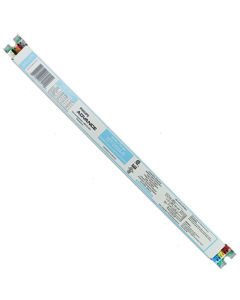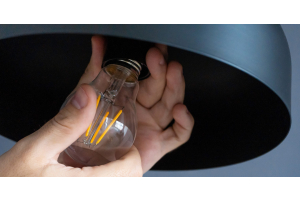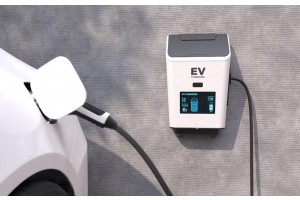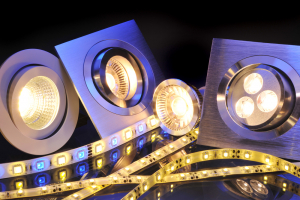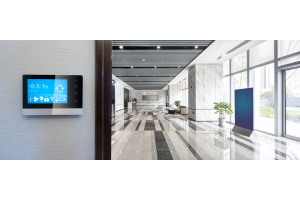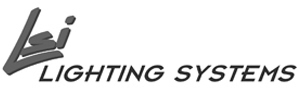Dimming Basics

Dimming Basics
There are various controllable lighting options that will dim your lights for ambiance or energy efficiency. Dimming lights 20% saves approximately 20% in energy savings. Controllable lighting solutions can be pretty simple for a single room or complex for total building lighting control. There are several components in a controllable lighting system: a dimmable lamp, dimming ballast, dimming control including dimmer and an optional sensor.
Most types of lighting technologies can be dimmed including incandescent, fluorescent, compact fluorescent, LED and halogen lamps. In some cases, there are both dimmable and non-dimmable versions of a lamp.
Fluorescent lamps require a dimming ballast. There are many types of dimming ballasts and things to consider when converting to a dimming fluorescent system.
The first thing to consider is dimming range. If it is strictly an energy savings application in a commercial environment, step-dimming or load-shed dimming ballasts are a good cost effective option. These ballast however, have limited dimming range of 40 to 60%%-100% or limited control such as 3 Step Dimming (ie: 0%, 40% 100%). Full range dimming is typically 10% or below to 100%.
The next thing to consider when selecting a ballast is the accessibility to your light fixture from your dimming controls. If there is limited access from the lighting control to the ballast and additional wiring cannot be easily added, you will need to use a powerline type of ballast where the dimming control is transmitted across the power lines of the ballast. This can be done with both with Philips Advance Mark 10 or Sylvania Powersense ballasts. Lutron also provides a wireless solution such as the Maestro Wireless series to tackle this problem.
If it is fairly easy to add additional wires from your 3 Wire, 0-10v or DALI dimming ballasts are a better solution. Many vendors provide 0-10V ballasts including Philip Advance Mark 7, GE UltraStart or Fulham. Sylvania Powersense ballast provides capabilities for both 0-10V and powerline dimming. 3 Wire Dimming is exclusively used within Lutron product families and requires 1 less wire. DALI is an industry standard dimming control specification for total building control systems. EcoSystem from Lutron is a variation of the DALI specification used exclusively with Lutron products.
Dimming controls consist of either a dimmer and/or a total building controller. Lutron provides a wide variety of dimmers depending on the type lamp and control system being used. The Lutron CL dimmers work on a variety of lamps including incandescent, certain compact fluorescent, halogen and led lamps. Lutron’s Diva DVTV is a popular 0-10v dimmer. Lutron also has a number of 3 Wire Dimmers for their Lutron’s fluorescent ballasts. Complete building controllers such as Lutron’s Grafik Eye will can handle multiple rooms and scenes.
There are many types of sensors that work in a controllable lighting solutions. Occupancy sensors and vacancy sensors can be stand alone components or integrated with dimming switches. They will turn on/off the lighting based on the presence or absence of a person. The state of California requires vacancy sensors for all controllable lighting solutions. Photocells and daylight sensors both detect the amount of ambient light in an area. Photocells are used to turn lights on/off based on a specific threshold of ambient light. Daylight sensors will interact with dimming ballast to maintain a consistent level of light depending on ambient light conditions.
If this brief overview seems overwhelming, please don’t hesitate to call. We have qualified lighting specialists that will make sure that you getting a product that best meets your needs.

-
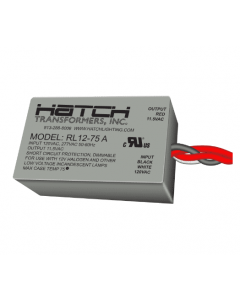 Hatch RL12-75A Low Voltage Transformer 75WSpecial Price $18.95 Regular Price $25.54
Hatch RL12-75A Low Voltage Transformer 75WSpecial Price $18.95 Regular Price $25.54 -
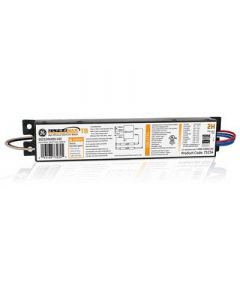 GE UltraMax GE232MAX90-V60 - 73234 T8 Dimming Ballast - Limited SupplySpecial Price $30.65 Regular Price $45.98
GE UltraMax GE232MAX90-V60 - 73234 T8 Dimming Ballast - Limited SupplySpecial Price $30.65 Regular Price $45.98 -
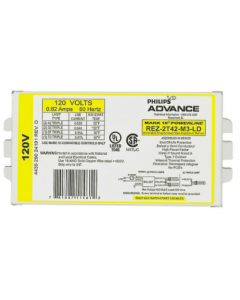 Advance Mark 10 REZ-2T42-M3-LD CFL Dimming Ballast - *DISCONTINUED*Special Price $97.85 Regular Price $124.32Out of stock
Advance Mark 10 REZ-2T42-M3-LD CFL Dimming Ballast - *DISCONTINUED*Special Price $97.85 Regular Price $124.32Out of stock -
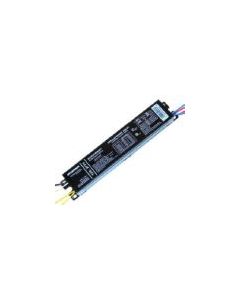 Sylvania QTP3X32T8/UNV DIM-TCL (50714) T8 Dimming Ballast - *DISCONTINUED* LIMITED Qty Avail.Special Price $57.55 Regular Price $70.00
Sylvania QTP3X32T8/UNV DIM-TCL (50714) T8 Dimming Ballast - *DISCONTINUED* LIMITED Qty Avail.Special Price $57.55 Regular Price $70.00 -
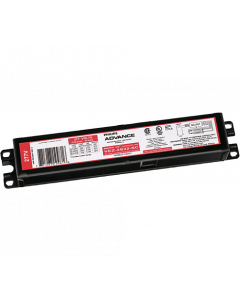 Advance Mark 10 VEZ-3S32-SC T8 Electronic Dimming BallastSpecial Price $88.95 Regular Price $119.60Out of stock
Advance Mark 10 VEZ-3S32-SC T8 Electronic Dimming BallastSpecial Price $88.95 Regular Price $119.60Out of stock -
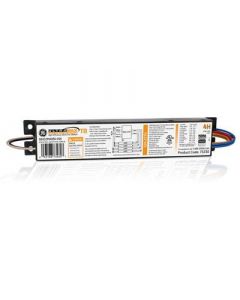 GE UltraMax GE432MAX90-V60 - 73230 T8 Dimming Ballast - *DISCONTINUED*Special Price $33.87 Regular Price $50.80Out of stock
GE UltraMax GE432MAX90-V60 - 73230 T8 Dimming Ballast - *DISCONTINUED*Special Price $33.87 Regular Price $50.80Out of stock -
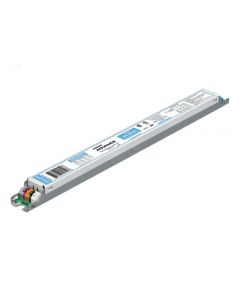 Advance Mark 10 IEZ-128-D T5 Electronic Dimming Ballast - *DISCONTINUED*Special Price $74.52 Regular Price $128.54Out of stock
Advance Mark 10 IEZ-128-D T5 Electronic Dimming Ballast - *DISCONTINUED*Special Price $74.52 Regular Price $128.54Out of stock -
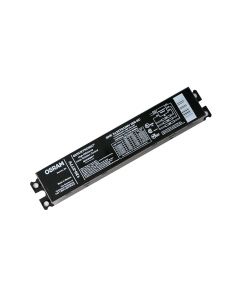 Sylvania QHE1x32T8/UNV DIM-TC (50735) T8 Dimming Fluorescent BallastSpecial Price $73.02 Regular Price $102.22Out of stock
Sylvania QHE1x32T8/UNV DIM-TC (50735) T8 Dimming Fluorescent BallastSpecial Price $73.02 Regular Price $102.22Out of stock -
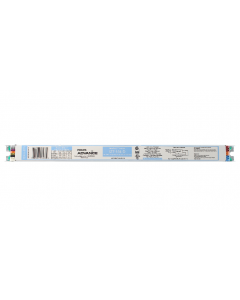 Advance Mark 7 IZT-154-D T5 Electronic 0-10V Dimming Ballast - INDEFINITE BACKORDERSpecial Price $92.18 Regular Price $119.84
Advance Mark 7 IZT-154-D T5 Electronic 0-10V Dimming Ballast - INDEFINITE BACKORDERSpecial Price $92.18 Regular Price $119.84 -
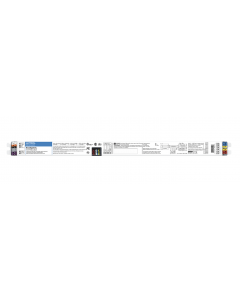 Lutron EcoSystem EC5T554JUNV2 T5 HO Dimming Ballast - *DISCONTINUED*Special Price $348.95 Regular Price $390.00Out of stock
Lutron EcoSystem EC5T554JUNV2 T5 HO Dimming Ballast - *DISCONTINUED*Special Price $348.95 Regular Price $390.00Out of stock -
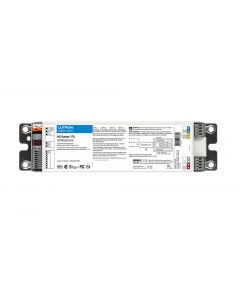 Lutron Hi-Lume H3T832GU310 T8 Dimming Ballast - *DISCONTINUED*Special Price $314.85 Regular Price $380.00Out of stock
Lutron Hi-Lume H3T832GU310 T8 Dimming Ballast - *DISCONTINUED*Special Price $314.85 Regular Price $380.00Out of stock -
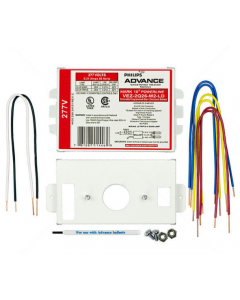 Advance Mark 10 VEZ-2Q26-M2-LDK CFL Electronic Dimming Ballast KIT - *DISCONTINUED*Special Price $98.85 Regular Price $132.00Out of stock
Advance Mark 10 VEZ-2Q26-M2-LDK CFL Electronic Dimming Ballast KIT - *DISCONTINUED*Special Price $98.85 Regular Price $132.00Out of stock -
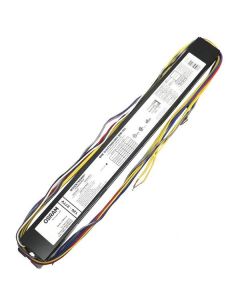 Sylvania QHE2x54T5HO/UNV DIM-TCL (51467) Electronic Fluorescent BallastSpecial Price $124.80 Regular Price $152.95Out of stock
Sylvania QHE2x54T5HO/UNV DIM-TCL (51467) Electronic Fluorescent BallastSpecial Price $124.80 Regular Price $152.95Out of stock -
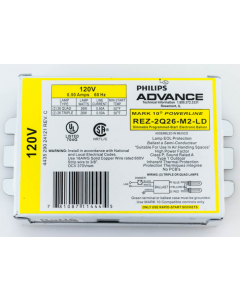 Advance Mark 10 REZ-2Q26-M2-LDK CFL Electronic Dimming Ballast KIT - *DISCONTINUED*Special Price $114.09 Regular Price $136.14Out of stock
Advance Mark 10 REZ-2Q26-M2-LDK CFL Electronic Dimming Ballast KIT - *DISCONTINUED*Special Price $114.09 Regular Price $136.14Out of stock -
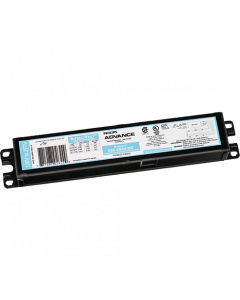 Advance ROVR IDA-2S32-SC DALI T8 Dimming Ballast - *DISCONTINUED*Special Price $60.00 Regular Price $90.00Out of stock
Advance ROVR IDA-2S32-SC DALI T8 Dimming Ballast - *DISCONTINUED*Special Price $60.00 Regular Price $90.00Out of stock -
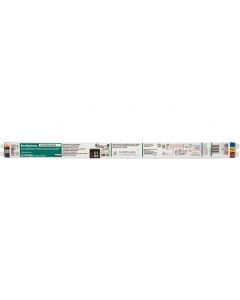 Lutron EcoSystem EC5T528JUNV2 T5 Dimming Ballast - *DISCONTINUED*Special Price $318.95 Regular Price $360.00Out of stock
Lutron EcoSystem EC5T528JUNV2 T5 Dimming Ballast - *DISCONTINUED*Special Price $318.95 Regular Price $360.00Out of stock -
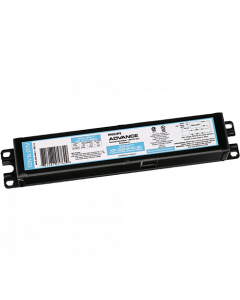 Advance Optanium IOP-2S28-95-SC-SD T5 Electronic Step Dimming BallastSpecial Price $69.07 Regular Price $103.60
Advance Optanium IOP-2S28-95-SC-SD T5 Electronic Step Dimming BallastSpecial Price $69.07 Regular Price $103.60 -
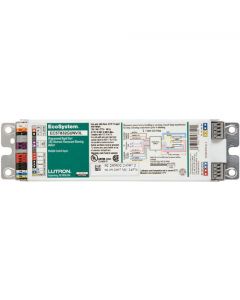 Lutron EcoSystem EC5T832GUNV3L T8 Dimming Ballast - *DISCONTINUED*Special Price $338.95 Regular Price $390.00Out of stock
Lutron EcoSystem EC5T832GUNV3L T8 Dimming Ballast - *DISCONTINUED*Special Price $338.95 Regular Price $390.00Out of stock -
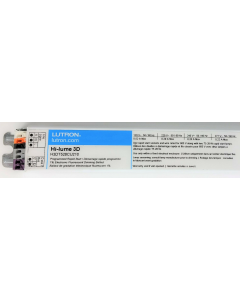 Lutron Hi-Lume 3D H3DT528CU210 T5 Dimming Ballast - *DISCONTINUED*Special Price $338.95 Regular Price $390.00Out of stock
Lutron Hi-Lume 3D H3DT528CU210 T5 Dimming Ballast - *DISCONTINUED*Special Price $338.95 Regular Price $390.00Out of stock -
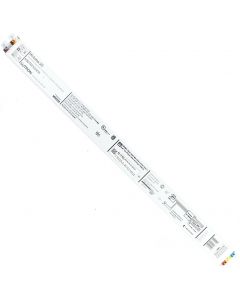 Lutron Hi-Lume 3D H3DT521CU210 T5 Dimming Ballast - *DISCONTINUED*Special Price $334.85 Regular Price $380.00Out of stock
Lutron Hi-Lume 3D H3DT521CU210 T5 Dimming Ballast - *DISCONTINUED*Special Price $334.85 Regular Price $380.00Out of stock -
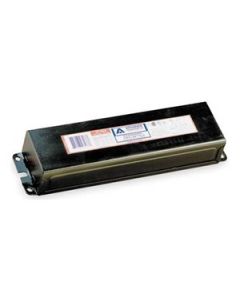 Advance Mark III V-2S110-TP T12HO Magnetic Fluorescent Ballast - *DISCONTINUED*Special Price $51.55 Regular Price $68.90Out of stock
Advance Mark III V-2S110-TP T12HO Magnetic Fluorescent Ballast - *DISCONTINUED*Special Price $51.55 Regular Price $68.90Out of stock -
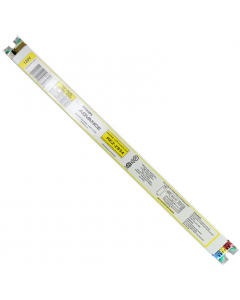 Advance Mark 10 REZ-2S54 T5 Dimming Ballast - *DISCONTINUED*Special Price $114.95 Regular Price $148.00Out of stock
Advance Mark 10 REZ-2S54 T5 Dimming Ballast - *DISCONTINUED*Special Price $114.95 Regular Price $148.00Out of stock -
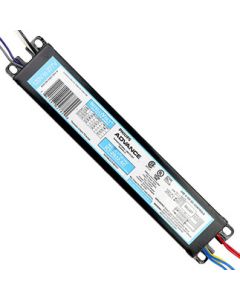 Advance Mark 7 IZT-2PSP32-SC T8 Dimming BallastSpecial Price $106.98 Regular Price $139.08
Advance Mark 7 IZT-2PSP32-SC T8 Dimming BallastSpecial Price $106.98 Regular Price $139.08 -
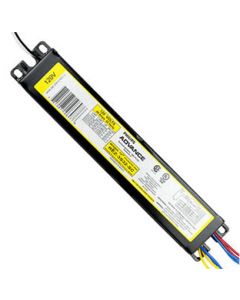 Advance Mark 10 REZ-3S32-SC T8 Dimming Fluorescent Ballast - *DISCONTINUED*Special Price $114.90 Regular Price $137.75Out of stock
Advance Mark 10 REZ-3S32-SC T8 Dimming Fluorescent Ballast - *DISCONTINUED*Special Price $114.90 Regular Price $137.75Out of stock -
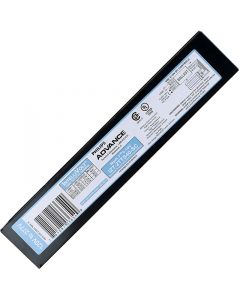 Advance Mark 7 IZT-2TTS40-SC CFL Dimming Ballast - *DISCONTINUED*Special Price $91.55 Regular Price $118.00Out of stock
Advance Mark 7 IZT-2TTS40-SC CFL Dimming Ballast - *DISCONTINUED*Special Price $91.55 Regular Price $118.00Out of stock -
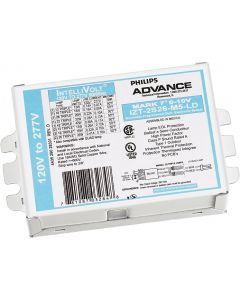 Advance Mark 7 IZT-2S26-M5-LD CFL Dimming Ballast - *DISCONTINUED*Special Price $98.85 Regular Price $137.60Out of stock
Advance Mark 7 IZT-2S26-M5-LD CFL Dimming Ballast - *DISCONTINUED*Special Price $98.85 Regular Price $137.60Out of stock -
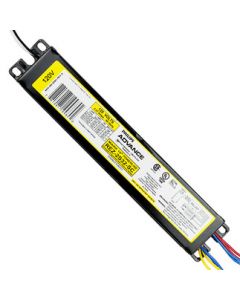 Advance Mark 10 REZ-2S32-SC T8 Dimming Ballast - *DISCONTINUED*Special Price $77.63 Regular Price $101.44Out of stock
Advance Mark 10 REZ-2S32-SC T8 Dimming Ballast - *DISCONTINUED*Special Price $77.63 Regular Price $101.44Out of stock -
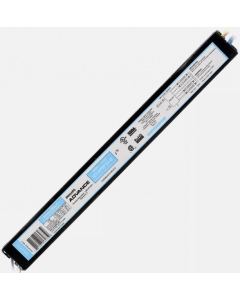 Advance Mark 7 IZT-4PSP32-G T8 Electronic Dimming Ballast - INDEFINITE BACKORDER!!Special Price $122.60 Regular Price $159.38
Advance Mark 7 IZT-4PSP32-G T8 Electronic Dimming Ballast - INDEFINITE BACKORDER!!Special Price $122.60 Regular Price $159.38 -
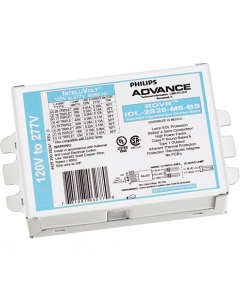 Advance ROVR IDL-2S26-M5-BS DALI CFL Electronic Dimming Ballast - *DISCONTINUED*Special Price $99.55 Regular Price $133.60Out of stock
Advance ROVR IDL-2S26-M5-BS DALI CFL Electronic Dimming Ballast - *DISCONTINUED*Special Price $99.55 Regular Price $133.60Out of stock -
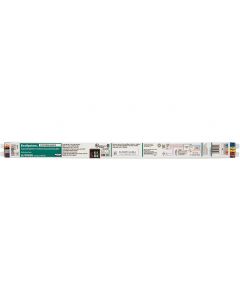 Lutron EcoSystem EC5T832JUNV2 T8 Dimming Ballast - *DISCONTINUED*Special Price $239.55 Regular Price $360.00Out of stock
Lutron EcoSystem EC5T832JUNV2 T8 Dimming Ballast - *DISCONTINUED*Special Price $239.55 Regular Price $360.00Out of stock -
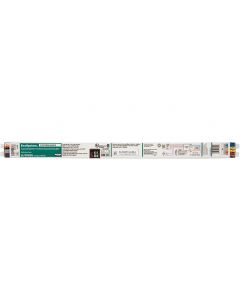 Lutron EcoSystem EC5T832JUNV1 T8 Dimming Ballast - *DISCONTINUED*Special Price $338.95 Regular Price $390.00Out of stock
Lutron EcoSystem EC5T832JUNV1 T8 Dimming Ballast - *DISCONTINUED*Special Price $338.95 Regular Price $390.00Out of stock -
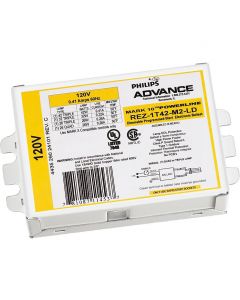 Advance Mark 10 REZ-1Q18-M2-LD CFL Electronic Dimming Ballast - *DISCONTINUED*Special Price $89.55 Regular Price $117.90Out of stock
Advance Mark 10 REZ-1Q18-M2-LD CFL Electronic Dimming Ballast - *DISCONTINUED*Special Price $89.55 Regular Price $117.90Out of stock -
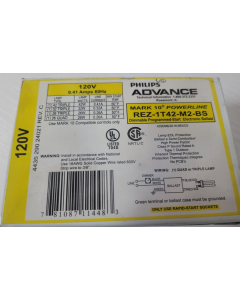 Advance Mark 10 REZ-1T42-M2-BS CFL Dimming Ballast - *DISCONTINUED*Special Price $98.55 Regular Price $126.14Out of stock
Advance Mark 10 REZ-1T42-M2-BS CFL Dimming Ballast - *DISCONTINUED*Special Price $98.55 Regular Price $126.14Out of stock -
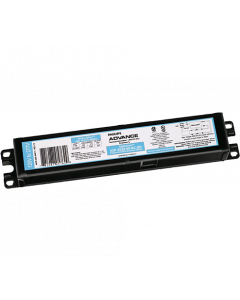 Advance Optanium IOP-2S28-115-SC-SD T5 Electronic Step Dimming BallastSpecial Price $79.69 Regular Price $103.60
Advance Optanium IOP-2S28-115-SC-SD T5 Electronic Step Dimming BallastSpecial Price $79.69 Regular Price $103.60 -
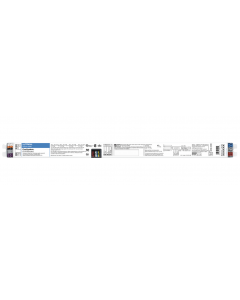 Lutron EcoSystem EC5T528JUNV1 T5 Dimming Ballast - *DISCONTINUED*Special Price $338.95 Regular Price $390.00Out of stock
Lutron EcoSystem EC5T528JUNV1 T5 Dimming Ballast - *DISCONTINUED*Special Price $338.95 Regular Price $390.00Out of stock -
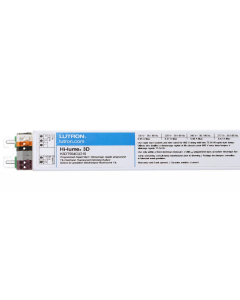 Lutron Hi-Lume 3D H3DT554CU210 T5HO Dimming Ballast - *DISCONTINUED*Special Price $338.95 Regular Price $390.00Out of stock
Lutron Hi-Lume 3D H3DT554CU210 T5HO Dimming Ballast - *DISCONTINUED*Special Price $338.95 Regular Price $390.00Out of stock -
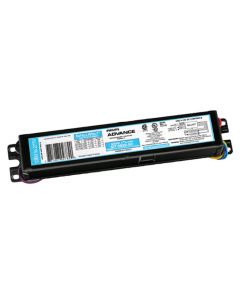 Advance Mark 7 0-10V IZT-3PSP32-SC T8 Electronic Dimming BallastSpecial Price $98.71 Regular Price $128.32
Advance Mark 7 0-10V IZT-3PSP32-SC T8 Electronic Dimming BallastSpecial Price $98.71 Regular Price $128.32 -
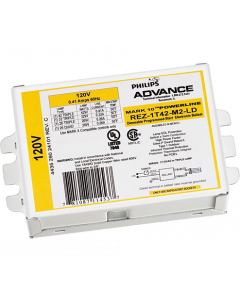 Advance Mark 10 REZ-2Q18-M2-LD CFL Electronic Dimming Ballast - *DISCONTINUED*Special Price $98.33 Regular Price $122.50Out of stock
Advance Mark 10 REZ-2Q18-M2-LD CFL Electronic Dimming Ballast - *DISCONTINUED*Special Price $98.33 Regular Price $122.50Out of stock -
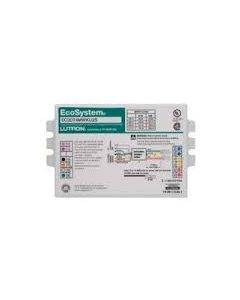 Lutron EcoSystem EC3DT442KU1 CFL Dimming Ballast - *DISCONTINUED*Special Price $259.95 Regular Price $310.00Out of stock
Lutron EcoSystem EC3DT442KU1 CFL Dimming Ballast - *DISCONTINUED*Special Price $259.95 Regular Price $310.00Out of stock -
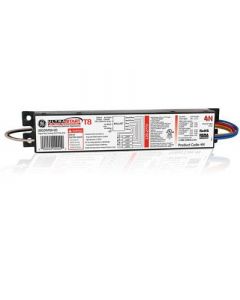 GE UltraStart GE432MVPS-N-V03W - 62044 T8 Dimming Ballast - *DISCONTINUED* LIMITED Stock RemainingSpecial Price $58.55 Regular Price $87.82
GE UltraStart GE432MVPS-N-V03W - 62044 T8 Dimming Ballast - *DISCONTINUED* LIMITED Stock RemainingSpecial Price $58.55 Regular Price $87.82 -
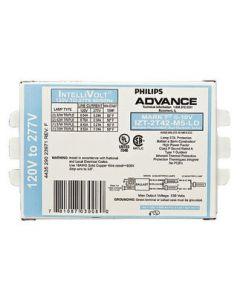 Advance Mark 7 IZT-2T42-M5-LD CFL Dimming Ballast - *DISCONTINUED*Special Price $95.31 Regular Price $142.96Out of stock
Advance Mark 7 IZT-2T42-M5-LD CFL Dimming Ballast - *DISCONTINUED*Special Price $95.31 Regular Price $142.96Out of stock -
 Advance XI020C050V042RNP2M Xitanium 20W 0.35-0.5A 42V LE+TE LED DriverSpecial Price $29.55 Regular Price $36.90
Advance XI020C050V042RNP2M Xitanium 20W 0.35-0.5A 42V LE+TE LED DriverSpecial Price $29.55 Regular Price $36.90 -
 Advance XI025C100V036DNM1 Xitanium 25W Constant Current LED DriverSpecial Price $32.55 Regular Price $39.00
Advance XI025C100V036DNM1 Xitanium 25W Constant Current LED DriverSpecial Price $32.55 Regular Price $39.00 -
 Advance XI025C100V036DSM1 Xitanium 25W Constant Current LED DriverSpecial Price $34.55 Regular Price $39.82
Advance XI025C100V036DSM1 Xitanium 25W Constant Current LED DriverSpecial Price $34.55 Regular Price $39.82 -
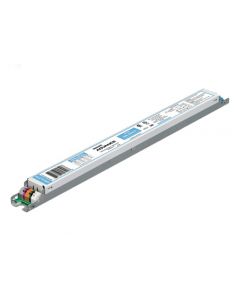 Advance Mark 10 IEZ-2S28-D T5 Electronic Dimming Ballast - *DISCONTINUED*Special Price $80.31 Regular Price $120.46Out of stock
Advance Mark 10 IEZ-2S28-D T5 Electronic Dimming Ballast - *DISCONTINUED*Special Price $80.31 Regular Price $120.46Out of stock -
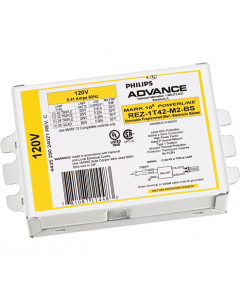 Advance Mark 10 REZ-2Q18-M2-BS CFL Electronic Dimming Ballast - *DISCONTINUED*Special Price $68.33 Regular Price $102.50Out of stock
Advance Mark 10 REZ-2Q18-M2-BS CFL Electronic Dimming Ballast - *DISCONTINUED*Special Price $68.33 Regular Price $102.50Out of stock -
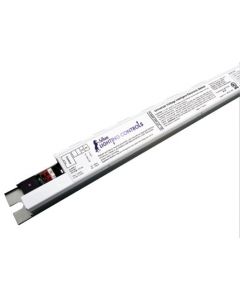 Fulham Lighting Controls HSM-UNV-239-LT5 T5 Dimming Ballast (DISCONTINUED - no direct replacement)Special Price $54.27 Regular Price $81.40
Fulham Lighting Controls HSM-UNV-239-LT5 T5 Dimming Ballast (DISCONTINUED - no direct replacement)Special Price $54.27 Regular Price $81.40 -
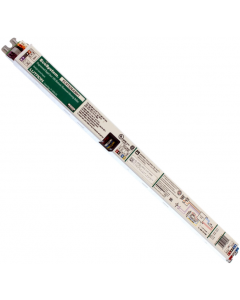 Lutron EcoSystem EC5T524JUNV1 T5HO Dimming Ballast - ONE UNIT Remaining!!!Special Price $318.95 Regular Price $360.00
Lutron EcoSystem EC5T524JUNV1 T5HO Dimming Ballast - ONE UNIT Remaining!!!Special Price $318.95 Regular Price $360.00 -
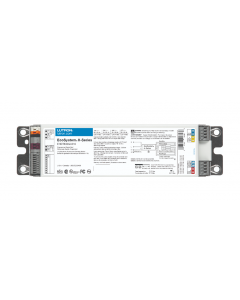 Lutron EcoSystem H EHDT832GU310 T8 Dimming Ballast - *DISCONTINUED*Special Price $338.95 Regular Price $390.00Out of stock
Lutron EcoSystem H EHDT832GU310 T8 Dimming Ballast - *DISCONTINUED*Special Price $338.95 Regular Price $390.00Out of stock

